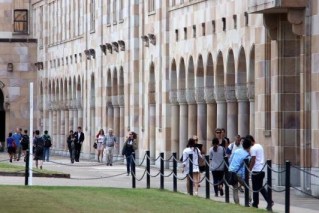Jobless rate plunges as youth finally get a crack at work
Queensland’s unemployment has fallen to 3.8 per cent, the lowest since 2008.


You're hired. Unemployment fell to 3.8 per cent in Queensland
In July, there were fewer unemployed people (474,000) than there were job vacancies (480,000 in May) Australia-wide, according to the Australian Bureau of Statistics.
The number of people out of work in Queensland has fallen to 108,500, a number not seen since 2009 when the state’s population was much smaller. The participation rate is also sitting at levels not seen since the 2011 mining boom.
However, there has been a significant drop in full-time work of about 26,000 jobs in Queensland since May and it appears to be mostly affecting women.
The unemployment rate for women in Queensland (3.3 per cent) remains significantly lower than for men (4.2 per cent), a trend that has become more evident in recent years as traditionally male jobs (agriculture, manufacturing etc) disappear.
But ANZ also pointed out that there had been a big drop nationally in youth unemployment.
“A big positive in Australia’s July labour market data was the 0.9 percentage points drop in youth unemployment, to a series low of 7 per cent. When the labour market is tight, it becomes easier for people with less experience and skill to find a job,” the bank’s economics team said.
The data survey also captured the impact of Covid on the workforce.
“In addition to people taking annual leave around the winter school holidays, there were also around 750,000 people working fewer hours than usual due to being sick in July 2022, around double the usual number we see during the middle of winter,” the ABS said.
The ABS also released data showing the average weekly ordinary time earnings for full-time adults was $1770 in May 2022, up 1.9 per cent ($33) over the year.
ABS head of labour statistics Bjorn Jarvis the recent annual increase in full-time earnings of 1.9 per cent was higher than it was last May (1.4 per cent), but lower than in November 2021 (2.1 per cent) and also lower than the 2.6 per cent for the Wage Price Index, released yesterday.
“Over the past six months there has been increasing employment, including full-time employment, in some lower paying industries, such as accommodation and food services, placing some downward influence on changes in average earnings,” he said.












